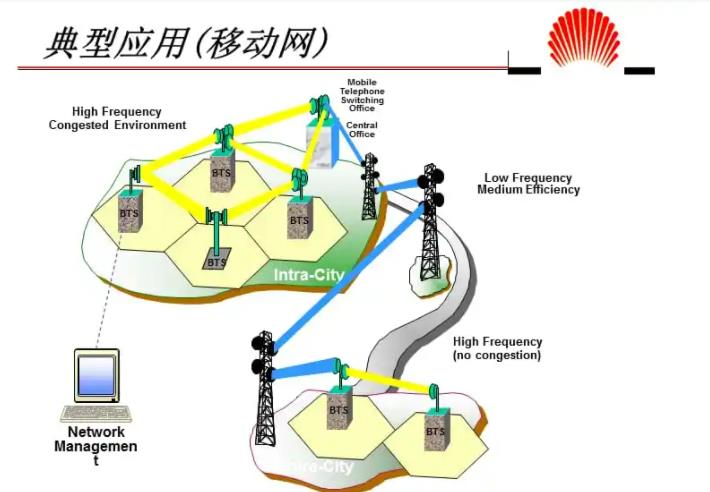四、会话分析理论对数学课堂对话分析的启示
会话分析采用社会学研究方法,借助大量真实的录音录像材料,提出了一整套相应的概念和工具来分析会话的结构和规律,集中描绘会话参与者的多个互动关注点,倾向于揭示互动的复杂性、流动性和动态性。会话分析理论具有可操作的会话分析原则、技术和步骤,帮助我们认识课堂会话的构成,并能透过细节分析提炼出一些粗线条的对话规则。所以,会话分析理论对数学课堂教学对话分析具有重要的指导意义,为数学课堂教学对话分析提供系统性的理论和技术支持。
当然,在运用会话分析理论时,也要客观分析其内在的不足,汲取理论界对会话分析的批评意见。库特哈德(M.Coulthard)认为,会话不同于句子,会话分析将相邻对子看作“谈话的基本结构单位”,这是不能令人完全信服的;会话分析所使用的描述范畴并未做出明确的定义。[39]此外,会话分析的理论框架仅仅局限于会话的个别部分,未见其对一次完整的会话作过通篇的分析;会话分析注重分析对话之间的轮回结构,而不太关注语言学范畴中的声音、结构、意义等方面的研究。[40]因此,戴维·希尔弗曼(David Silverman)和保罗尔·瑟德豪斯(P.Seedhouse)等学者提出,应将会话分析与人种学方法有机整合加以运用。在会话分析初期,可使用会话分析方法来分析互动的细节以解决会话参与者是如何产生互动的;然后可采用人种学方法分析,通过谈话细节反映其背后特定的文化问题,以解决为什么会产生制度或文化上的约束。[41]还有学者提出会话分析可以结合互动分析来使用,因为会话分析重点分析对话间的轮回结构,而互动分析中的话语分析模式则重在关注话语在活动中是如何作为意义建构的中介。[42]借助两者的整合,能更好地理解师生关系和互动模式,分析学习者参与学习活动的表现以及随时间发生变化的过程。
为此,将会话分析理论运用于数学课堂对话分析时,可考虑将会话分析与人种学、互动分析等方法有机整合运用,发挥其相互补充和相互兼容的功能,这样则更能全面地透析对话结构及其所蕴含的社会特质。
【注释】
[1]维果茨基著,余震球选译.维果茨基教育论著选(第2版)[M].北京:人民教育出版社,2005:10-17.
[2]Vygotsky,L.(1986).Thought and Language[M].Kozulin,A.Cambridge,M A:MIT Press.Ibid:36.
[3]Rogoff,B.(2003) The cultural nature of development.Oxford:Oxford University Press.
[4]维果茨基著,余震球选译.维果茨基教育论著选(第2版)[M].北京:人民教育出版社,2005:10-17.
[5]Vygotsky.L.S.(1978).Mind in society.[M] Cambridge,M A: Harvard University Press.p.86.
[6]Vygotsky.L.S.(1978).Mind in society.[M] Cambridge,M A: Harvard University Press.
[7] Lantolf,J.P.(2006).Sociocultural theory and L2: State of the art.Studies in Second Language Acquisition,28(1),67-109.
[8]Cobb Paul & Yackel Erna.(1996).Constructivist,emergent,and sociocultural perspectives in the context of developmental research[J].Educational Psychologist,31(3/4): 175-190.
[9]译自Edwards,A.(2005)Letƴs get beyond community and practice: the many meanings of learning by participating,The Curriculum Journal,16(1),49–65.
[10]译自Engeström,Y.(1987) Learning by Expanding:An activity theoretical approach to developmental research.Helsinki:Orienta-Konsultit.
[11]Engeström,Y.,(2001).Expansive learning at work: toward an activity theoretical reconceptualization.Journal of Education and Work,14(1):133-156.
[12]Angel M.Y.Lin.(2007).Whatƴs the Use of“Triadic Dialogue”?:Activity Theory,Conversation Analysis,and Analysis of Pedagogical Practices.Pedagogies: An International Journal,2(2),77–94.
[13]译自:Igor M.Arievitch.(2005).Connecting Sociocultural Theory and Educational Practice:Galperin's Approach.Educational Psychologist,40(3),155-165.
[14]钟启泉.知识建构与教学创新——社会建构主义知识论及其启示[J].全球教育展望,2006(8):12-18.
[15]莱斯利·P·斯特弗,杰里·盖尔主编.高文,徐斌艳,程可拉等译.教育中的建构主义[M].上海:华东师范大学出版社,2002.
[16]Alexander Liebruks.(2011).The concept of Social Construction[J].Theory and Psychology,2001,11(3):363-391.
[17]Chu Chih Liu,IJu(Crissa)Chen.(2010).Evolution of Constructivism Contemporary Issues.Education Research.Vol.3,No.4:63-66.
[18]裴新宁.社会建构论及其教育意义.全球教育展望[J].2001(10).
[19]叶浩生.社会建构论视野中的心理科学[J].华东师范大学学报(教育科学版),2007(1).
[20]成晓光.社会建构主义的语言哲学基础[J].外语与外语教学,2005(1):6.
[21]袁朝辉,霍涌泉.认知心理学与社会建构主义的语言观[J].社科纵横.2011(2):168170.
[22]Paul Adams.(2006).Exploring social constructivism: theories and practicalities[J].Education.Vol.34,No.3,pp.243–257.
[23]Rnest Paul.(1998).Social Constructivism as a Philosophy of Mathematics[M].New York:State University of New York Press.
[24]戴维·伯姆著,王松涛译.论对话[M].北京:教育科学出版社,2004:6.
[25]钟启泉.知识建构与教学创新——社会建构主义知识论及其启示[J].全球教育展望,2006(8):16.
[26]Chaudron,C.(1988).Second language classrooms:Research on teaching and learning.Cambridge,England:Cambridge University Press.p.14.
[27]Levinson,S.(1983).Pragmatics.Cambridge,England: Cambridge University Press.p.287-294.
[28]Paul Seedhouse.(2004).The Interactional Architecture of the Language Classroom: A Conversation Analysis Perspective.Blackwell Publishing,Inc.p.14-16.
[29]Frances Christie.(2002).Classroom Discourse Analysis: A Functional Perspective.Continuum.p.10.
[30]Cobb Paul & Yackel Erna.(1996).Constructivist,emergent,and sociocultural perspectives in the context of developmental research[J].Educational Psychologist,31(3/4): 175-190.
[31]Hutchby,I., Wooffitt,R.(1998).Conversation analysis.Cambridge,England: Polity Press.p.14.
[32]Ten Have,P.(1999).Doing conversation analysis:A practical guide.London:Sage.p.15.
[33] Paul Seedhouse.(2004).The Interactional Architecture of the Language Classroom: A Conversation Analysis Perspective.Blackwell Publishing,Inc.p.14-16.
[34]Paul Seedhouse.(2004).The Interactional Architecture of the Language Classroom: A Conversation Analysis Perspective.Blackwell Publishing,Inc.p.16.
[35]于国栋编著.会话分析[M].上海:上海外语教育出版社,2008:94.
[36]Levinson S.(1983).Pragmatics.Cambridge:Cambridge University Press:294-303.
[37]刘虹.会话结构分析[M].北京:北京大学出版社,2004:46.
[38]Ten Have.(1990).Doing Conversation Analysis:A Practical Guide.London:Sage.p.39.
[39]Paul Seedhouse.(2004).The Interactional Architecture of the Language Classroom: A Conversation Analysis Perspective.Blackwell Publishing,Inc.p.38-39.
[40]于国栋编著.会话分析[H].上海:上海外语教育出版社,2008:41-46.
[41]Malcolm Coulthard.(1977).An Introduction to Discourse Analysis.London:Longman.
[42]刘红艳,李悦娥.话语分析诸方法对比分析[J].教育理论与实践.2009(4):38-41.
免责声明:以上内容源自网络,版权归原作者所有,如有侵犯您的原创版权请告知,我们将尽快删除相关内容。















